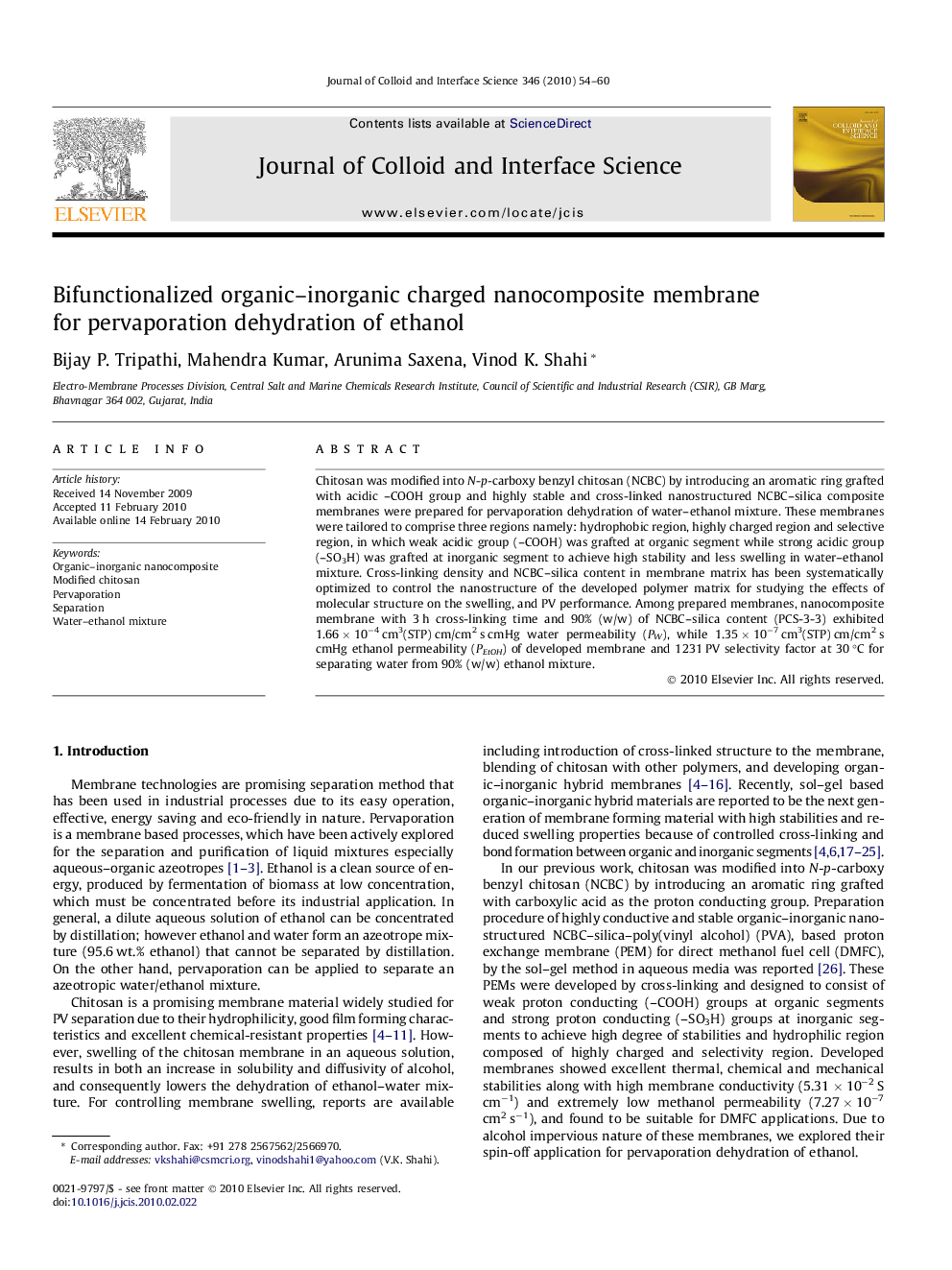| Article ID | Journal | Published Year | Pages | File Type |
|---|---|---|---|---|
| 609296 | Journal of Colloid and Interface Science | 2010 | 7 Pages |
Chitosan was modified into N-p-carboxy benzyl chitosan (NCBC) by introducing an aromatic ring grafted with acidic –COOH group and highly stable and cross-linked nanostructured NCBC–silica composite membranes were prepared for pervaporation dehydration of water–ethanol mixture. These membranes were tailored to comprise three regions namely: hydrophobic region, highly charged region and selective region, in which weak acidic group (–COOH) was grafted at organic segment while strong acidic group (–SO3H) was grafted at inorganic segment to achieve high stability and less swelling in water–ethanol mixture. Cross-linking density and NCBC–silica content in membrane matrix has been systematically optimized to control the nanostructure of the developed polymer matrix for studying the effects of molecular structure on the swelling, and PV performance. Among prepared membranes, nanocomposite membrane with 3 h cross-linking time and 90% (w/w) of NCBC–silica content (PCS-3-3) exhibited 1.66 × 10−4 cm3(STP) cm/cm2 s cmHg water permeability (PW), while 1.35 × 10−7 cm3(STP) cm/cm2 s cmHg ethanol permeability (PEtOH) of developed membrane and 1231 PV selectivity factor at 30 °C for separating water from 90% (w/w) ethanol mixture.
Graphical abstractCross-linked N-p-carboxy benzyl chitosan (NCBC)–silica nanocomposite membrane grafted with highly acidic –SO3H groups and –COOH are for pervaporation dehydration of water–ethanol mixture. These membranes were tailored to consist of hydrophobic region, highly charged region and selective region, responsible for selective dehydration.Figure optionsDownload full-size imageDownload high-quality image (50 K)Download as PowerPoint slide
